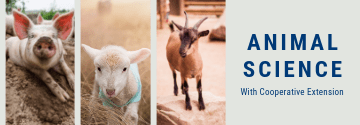While it may still be winter, the time to start thinking about spring planting is now. A part of that thinking and planning process is choosing adapted and high-performance forage varieties.
In The Ohio State University (OSU) Ohio Beef Cattle Letter, OSU Agriculture and Natural Resources Educator Christine Gelley discusses what to keep in mind when selecting future forage genetics for your farm or ranch.
Know the difference
Let’s begin with a quick review about the differences between species, varieties, and cultivars.
In plant terms, a species is a plant that is distinctly different from other plants in features and characteristics, meaning that other plants of the same species will share similar characteristics. For example, think red clover versus ladino clover; both are clovers, but two distinctly different species.
A variety is a variation of a plant characteristic that still falls within the range of characteristics of a species. “Think of varieties as species variations that occur in nature without human interaction,” Gelley explains.
While varieties are naturally occurring, humans select for cultivars. These cultivars often bear a trade name that is marketed by the seed company. In spite of the difference between a variety and a cultivar, it remains a common practice for a cultivar to be referred to as a variety.
“By the time you are ready to shop for seed, have your species selected and a few potential cultivars on your list of acceptable choices,” Gelley advises.
Regional requirements
To narrow down your choices even further, look at results of regionally conducted forage variety tests. “If you are farming in Ohio and shopping based on variety performance trials conducted in Tennessee, you may end up unsatisfied with your results,” Gelley explains.
Pay attention to variables in the trial, including total rainfall, soil and air temperatures, soil type, fertilizer and pesticide applications, and the number of years evaluated. Trials that were conducted over the span of several years are typically more trustworthy.
Also consider who is conducting the trials. Many land-grant universities conduct forage trials and are unbiased. Performance trials by seed companies can be reliable, but keep in mind that they are trying to get you to buy their product instead of a competitor’s.
Know the supplier
Once you have a short list of varieties that will fit your farm and needs, shop with a reputable supplier. They should have clean facilities, knowledgeable staff, and good customer service.
“Contact the seed dealer with your cultivar list and have a conversation about what you are looking for and what they can offer,” Gelley recommends. She also advises looking at the seed tags and comparing production dates, germination rates, and the percentage of pure live seed.
“For your best chance at success, do your research before you shop, rather than settling for whatever is in stock at the local co-op,” Gelley says.
Keep records
After selecting, purchasing, and planting your cultivar, keep note of observations you make throughout the year. This includes seeding date, planting rate and depth, weather conditions, germination success or failure, weed pressure, and animal preference.
Perform your own experiment
“If you can’t decide between one cultivar and another, get more than one and start your own on-farm research project,” Gelley suggests.
Plant the cultivars in the same location under similar conditions. As you go through their production cycle, apply the same inputs and harvest the same way all while taking notes and making observations. The results may surprise you.


